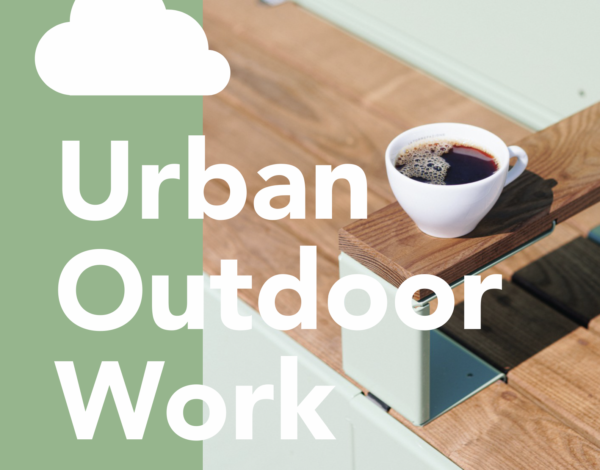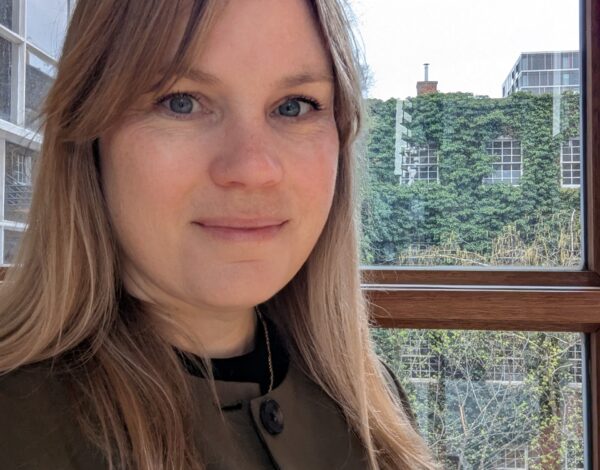A walk in a park
After years of online meetings, it was a joy to finally meet fellow placemakers and urban designers face to face during the Placemaking as a City Wide Endeavor -event in Helsingborg. The two day event, 15-16th of June, co-organised by Placemaking Europe and The City of Helsingborg within H22 expo was packed with inspiring talks, workshops and city walks.
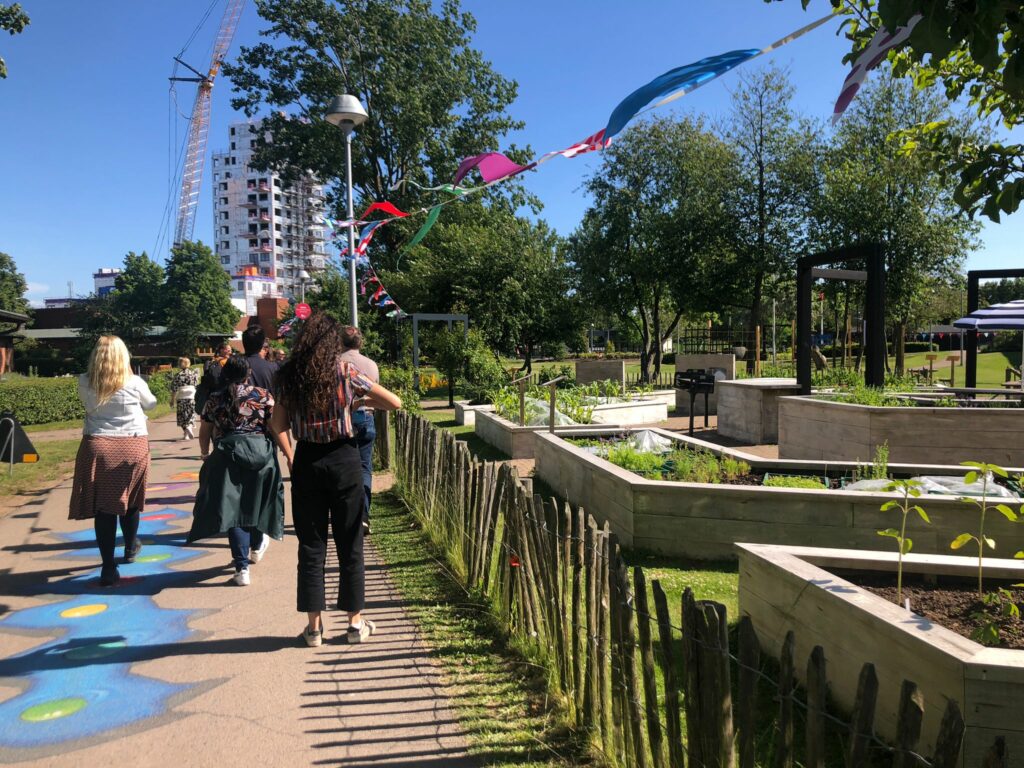
As I arrived and walked from the train station to the district of Söder in the early evening, my first impressions of the city were that it’s low rise, has cozy sized streets and many open squares. On the way to the hotel, I walked through the Furutorplatsen park. As I looked around, I saw many places within the park and observed how well it had been designed with people, different activities and users in mind. I presumed there must have been some kind of placemaking process in place: the park hosts play elements, different kinds of seating areas, outdoor gym equipment, grilling places, water element and of course trees and plants, all blending into a lively public place in which these different functions are not separated from each other. I later discovered that the park had undergone a placemaking-focused re-development with very successful results: the park is lively with all age groups and welcoming for all. It is also situated in the multicultural district of Söder, setting a good example of how the city’s public places should be developed equally within the city, not just in the most central and economically thriving areas.
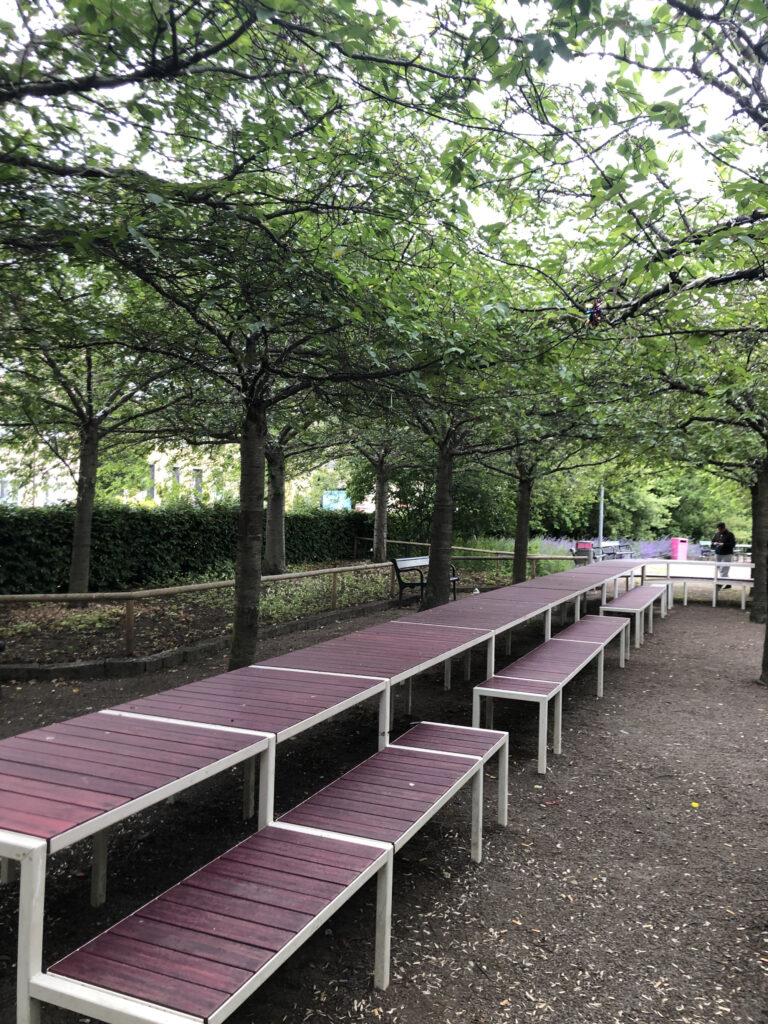
There was just one corner, with a long winding table and benches covered with beautiful low trees, which might feel slightly intimidated at night time. But I will get back to that later.
Exploring Helsingborg with placemaking glasses on
Our hosts Moa Sundberg and Cecilia Fredriksson and their fellow urban designers from Helsingborg city placemaking team, inspired us by demonstrating the projects they have been involved in and how the city carries out efforts in making inclusive, lively public spaces the backbone of the urban environment – without the fear of failing. In fact, failures are celebrated and “best fails” even get recognition: any department within the municipality of Helsingborg can nominate a project for the “failure prize”. This workplace culture is something all municipalities could learn from in order to adopt a more creative and fun approach in carrying out experiments and projects while developing more liveable cities.

We put our knowledge into practice in an inspiring workshop facilitated by Marcus Andersson (Future Place Leadership) which took the participants to three places in the city: I jumped into a group exploring the possibilities of Stadsparken. It was really interesting to share ideas and views on how our peers would tackle the challenges such as non-inclusive sectioning of the park, negative effects of the car traffic and opening up the space for all users. Observing the use of the park and sharing discussions, we wrote down dozens of ideas and worked together to formulate a concise place-led proposal to develop the park into a more lively, open space for all. We would, for example, open up the library more towards the park, move hedges to create zoning with more positive effects and connect the water element to the play park. It’s impressive how fast all three groups put together many viable and implementable ideas for the sites within just a few hours.
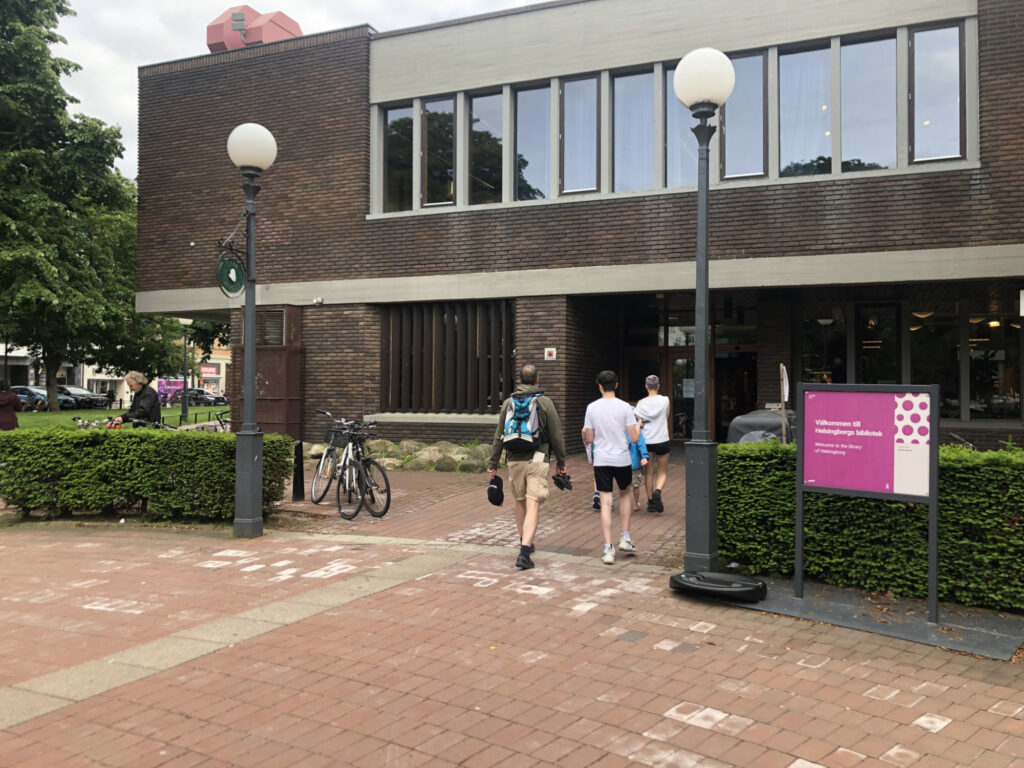
Exploring the city, I was especially impressed by the city’s play parks and how placemaking plays a role in creating them. Helsingborg has seven outstanding thematic play parks: colorful, imaginative and welcoming. These landmarks of play stand as symbols of appreciation for the children and families living in the city. Most importantly, they are not fenced off but are open for all. Helsinki, my home city, has a lot to learn in creating playgrounds with actual place identity, openness and colourfulness. Such play parks can also be local attractions for people to visit. The planners told us that children are involved in the planning process and the opening of a new playground can be a public party, which is a lovely way to celebrate everyday environments.
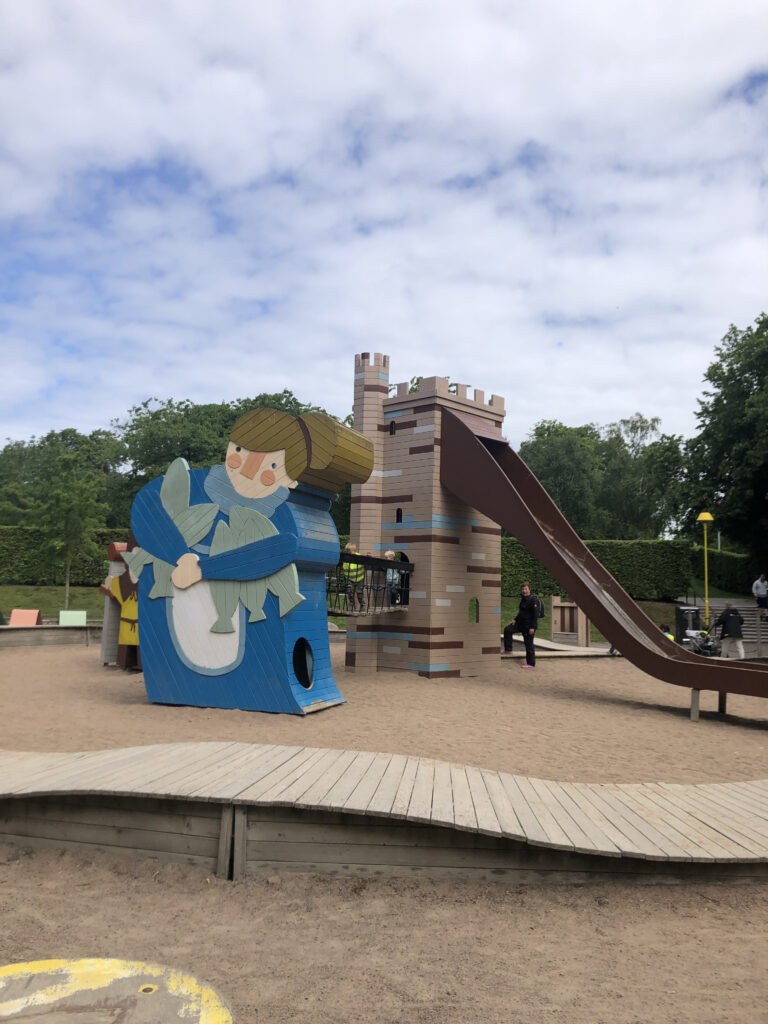
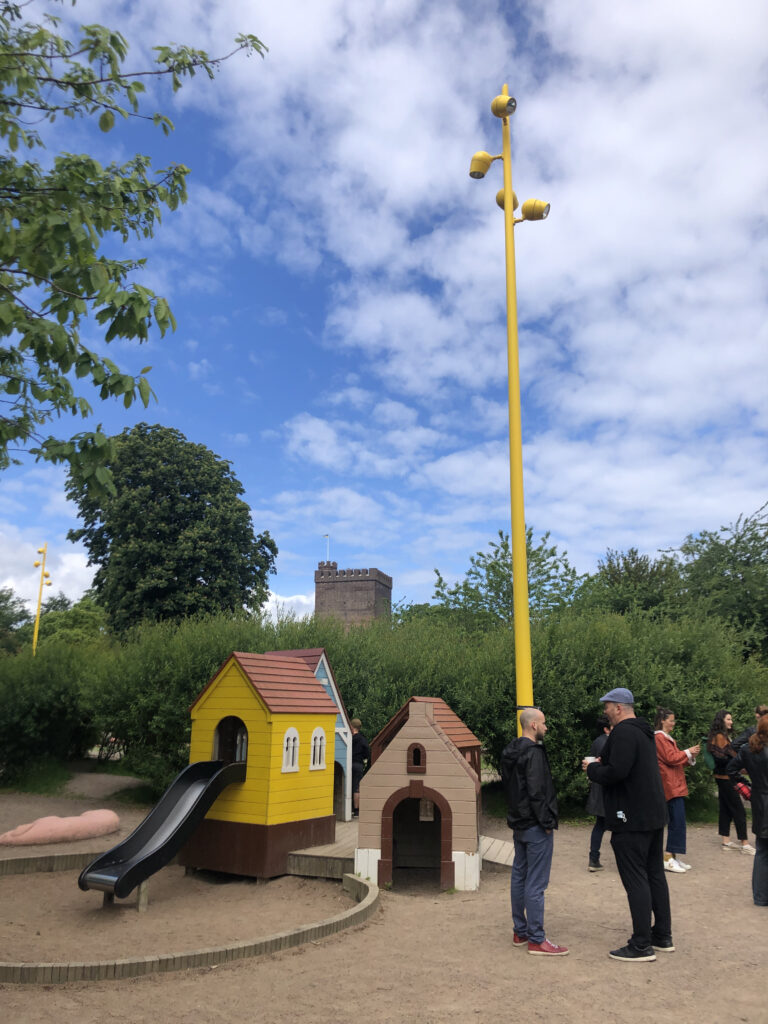
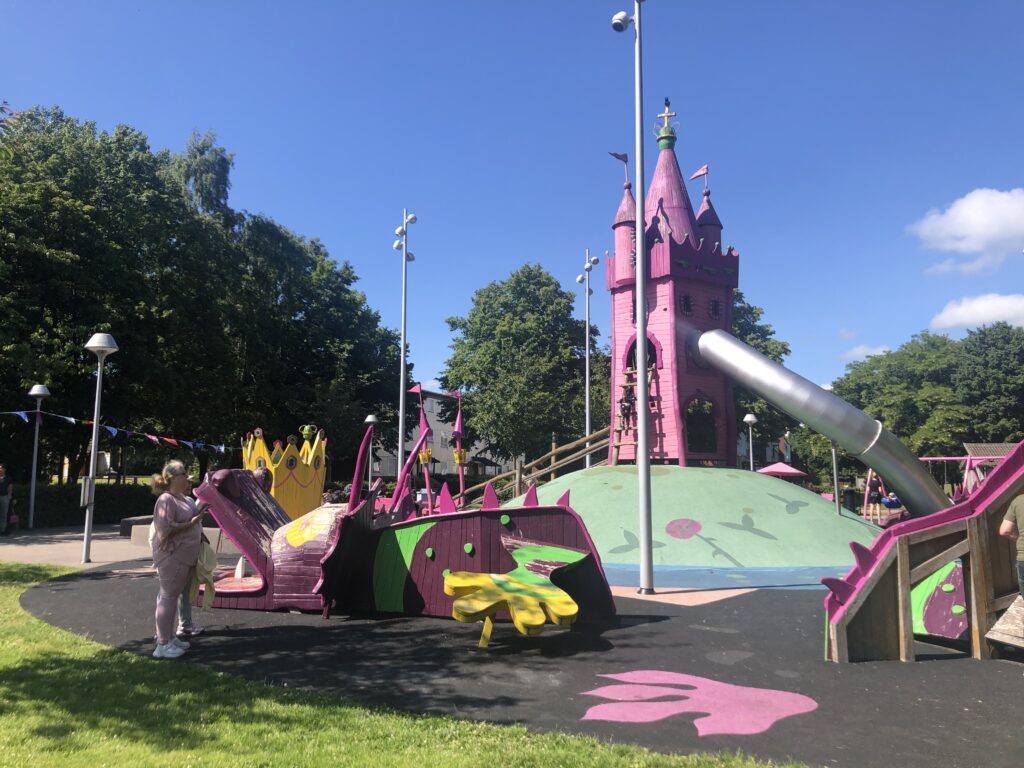
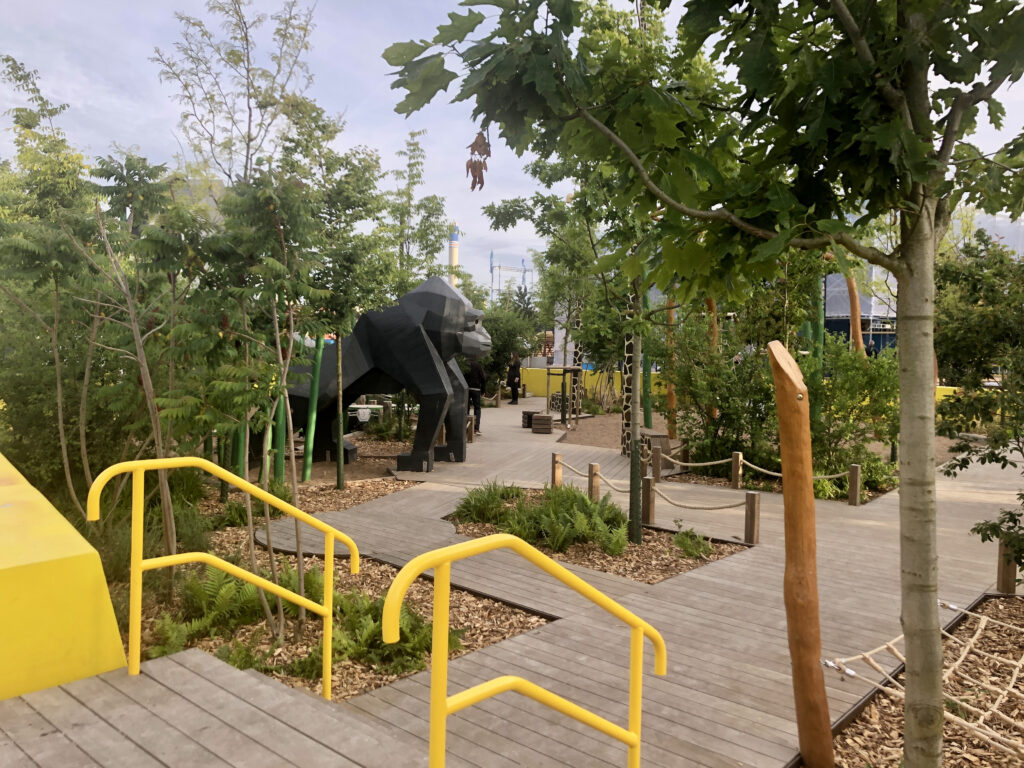
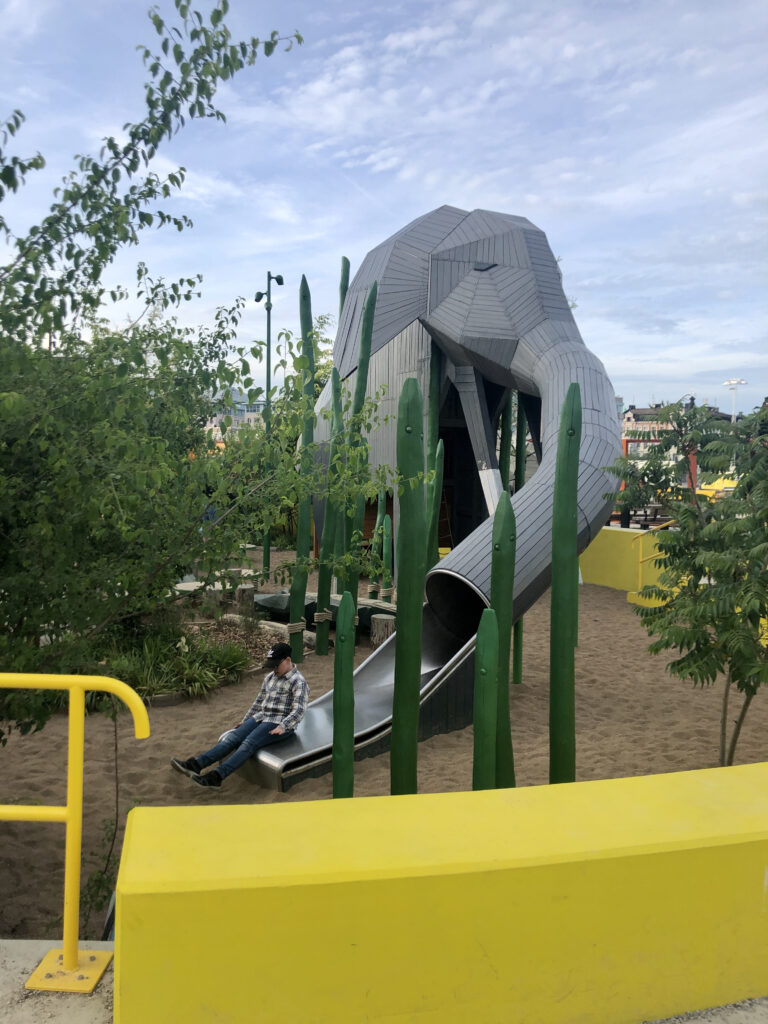
We spent more time in one of the playgrounds with colourful castles, dragons and crowns, observing the usage and discussing how play and moving has many forms and how adults interact more with children in a playground that is adventurous. The session hosted by Viviana Cordero led us to think about how play is an important practice of social skills, further highlighting the importance of diverse playgrounds.
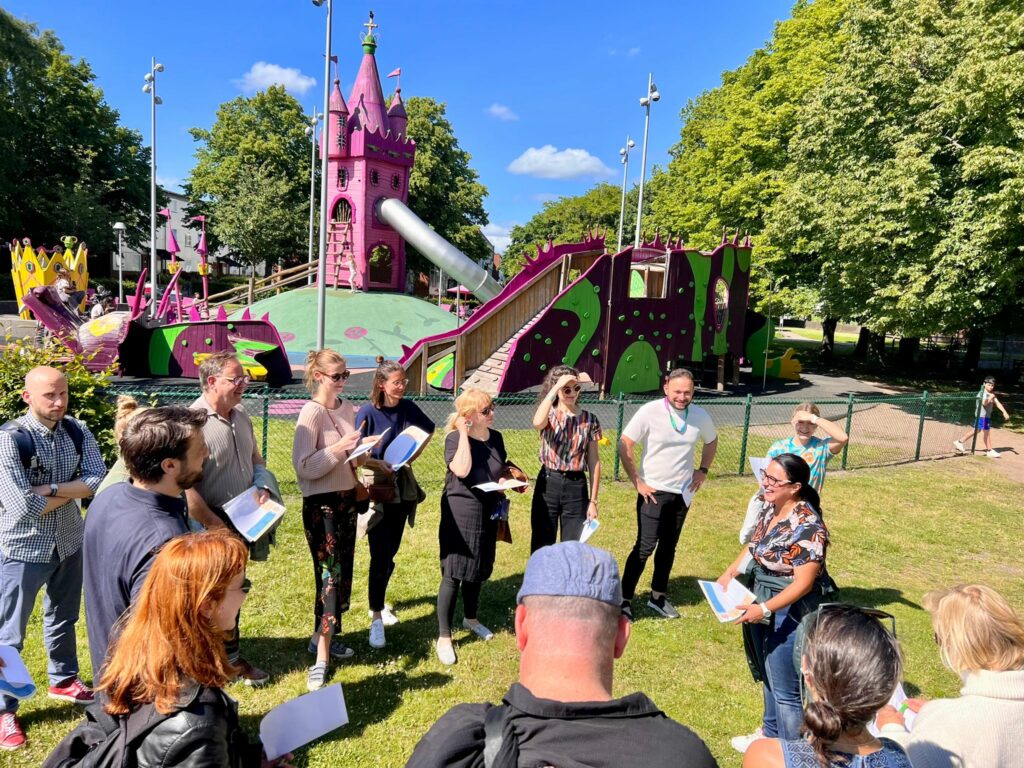
The rest of the afternoon was also dedicated to the topic of urban play as we moved on from the park, jumping, squatting, bouldering – happily breaking the code of how one should behave in a public space. This was a good introduction into sharing stories of play and physical activities in our childhoods led by Anna Louise Bradley (Placemaking Europe, STIPO), working outdoors (coincidentally during the Outdoor Office Day) and creating urban play with random objects led by Todor Kesarovski. The conclusion was that almost any urban space can be playful and placemaking can add playfulness in almost any place. Sometimes all you need is a hula hoop, stairs and some people as cones (pictured). Urban play doesn’t have to be imposed, but rather something inspired by public elements and welcoming spaces.
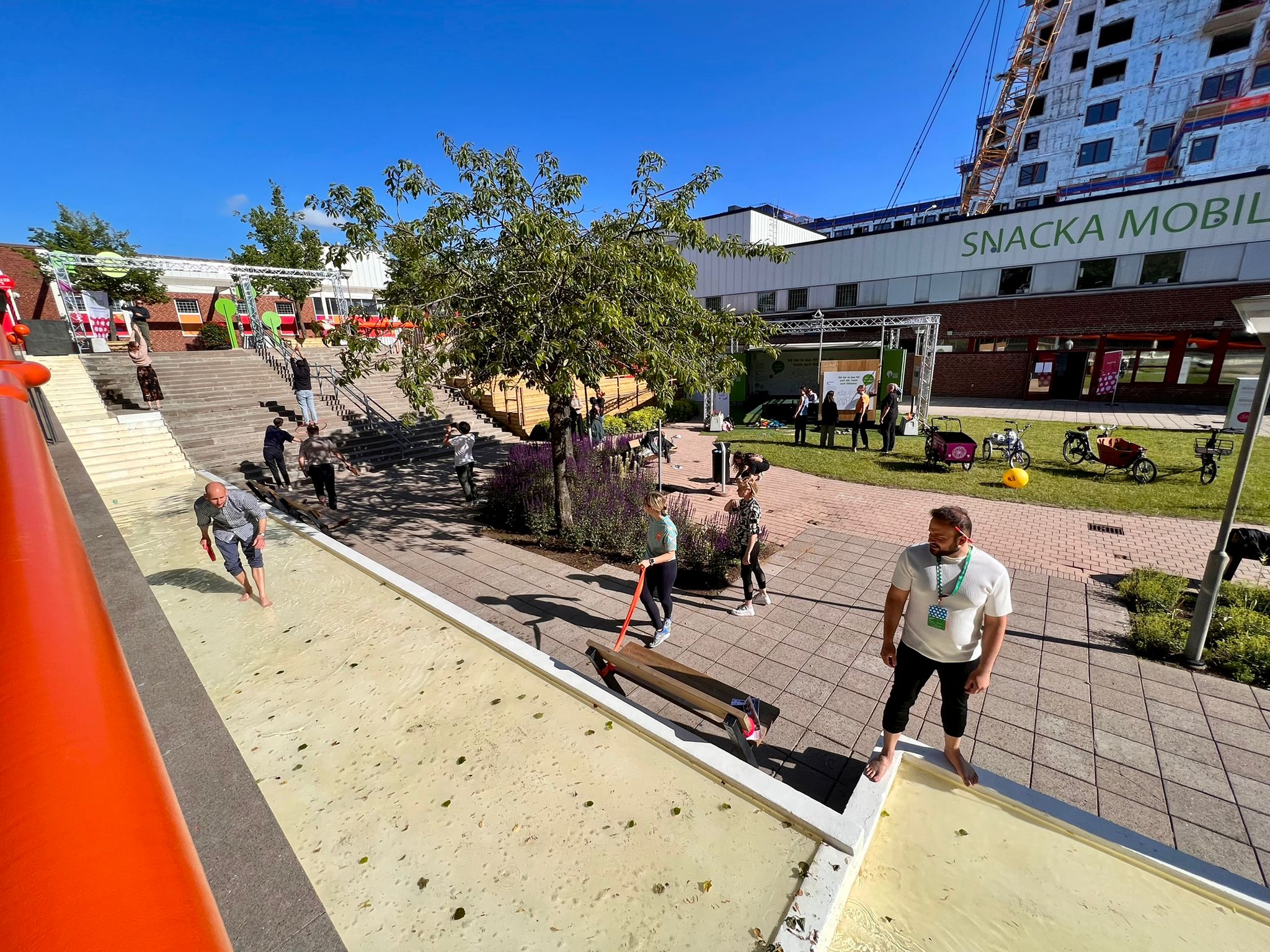
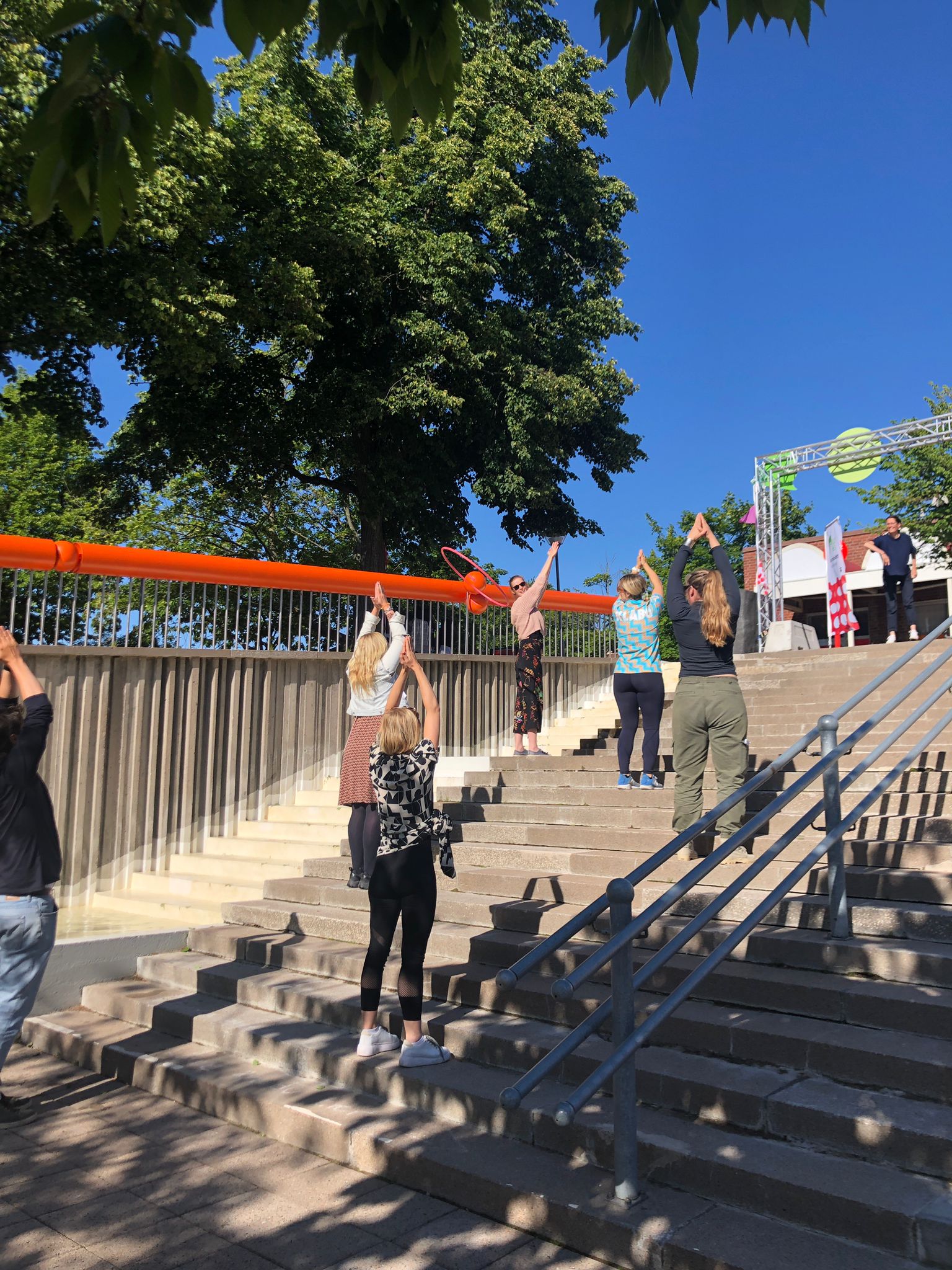
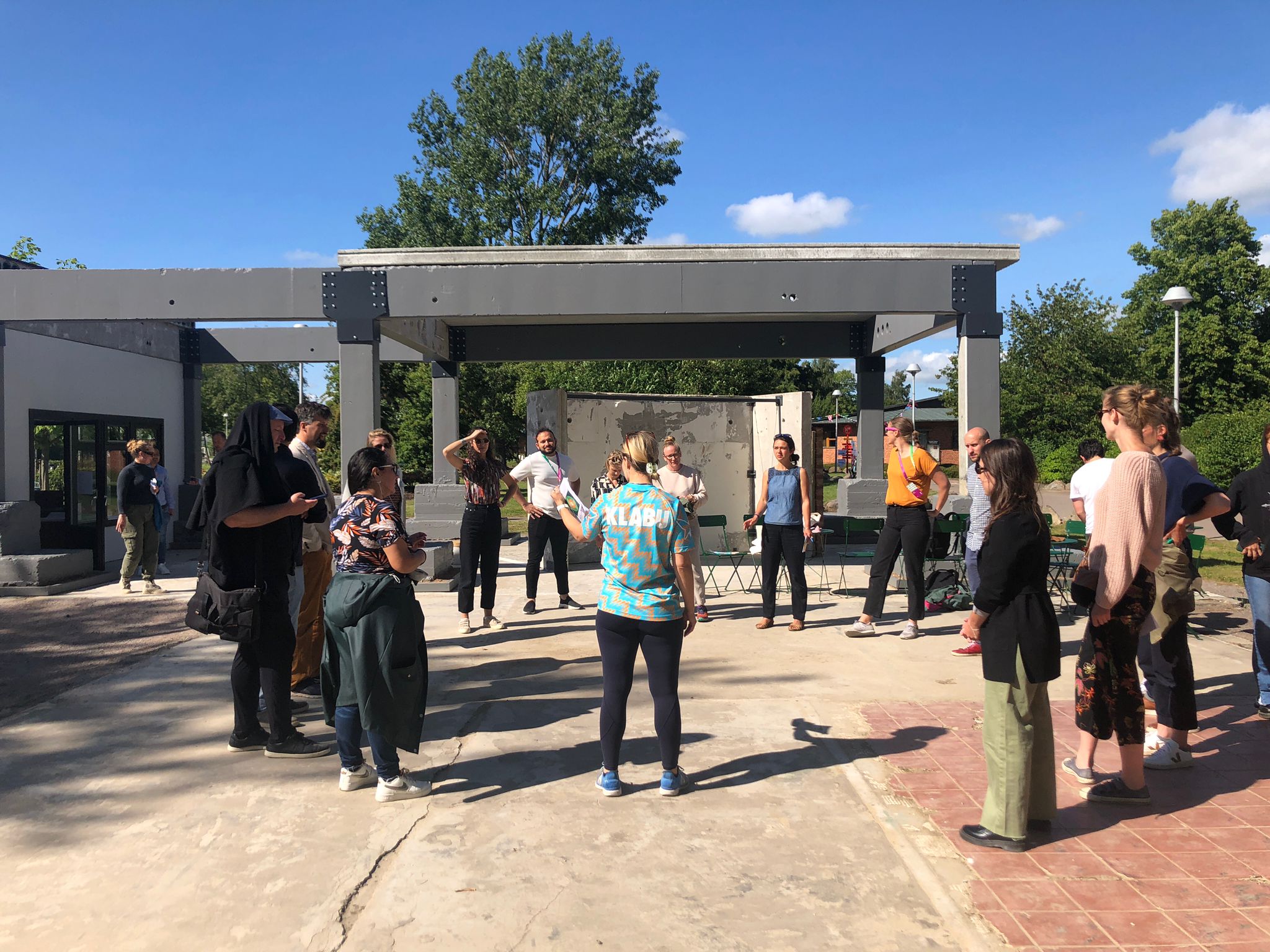
In between the event programme, I had a chance to pop by the official inauguration of the Street Moves project in Rektorsgatan and to (finally) also meet Daniel Byström (ArkDes). The newest project is a cordless electric car charging point which leaves more possibilities for the use of street space. Street Moves has created a fast forward model and modular building kits for reinventing street design and sparking discussions and new initiatives on how we plan and use our streets.
Sharing stories about good places for urban change
Getting first-hand knowledge and sharing information and learnings is empowering for the joint goal of bringing placemaking methods and frameworks forward. It is a potential methodology across all levels of municipal departments and concerns different stakeholders around all places. Ethan Kent’s (PlacemakingX) keynote inspired us to think further on how to build cities around places, which was well put to practice in the two days in Helsingborg and beyond.
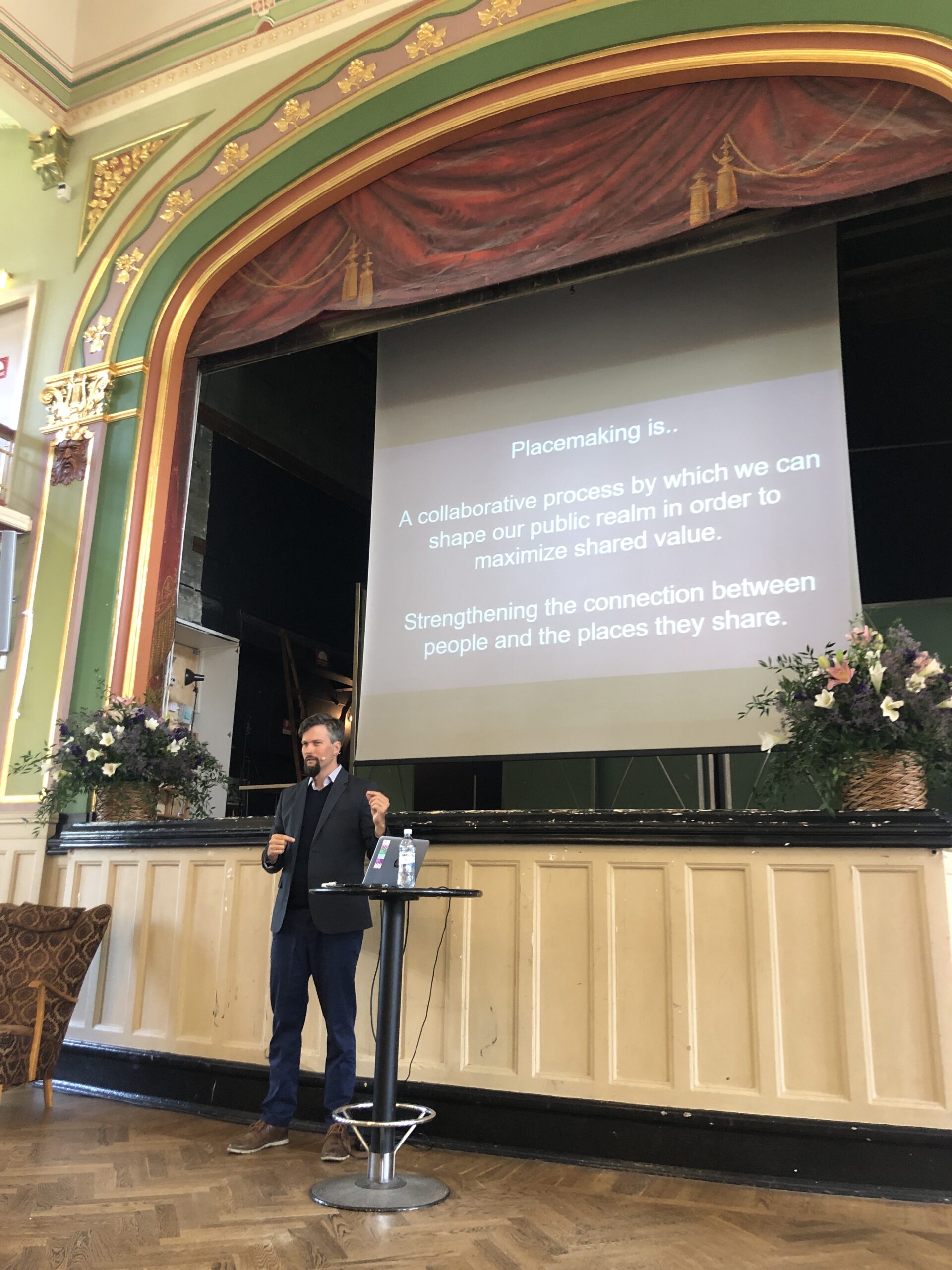
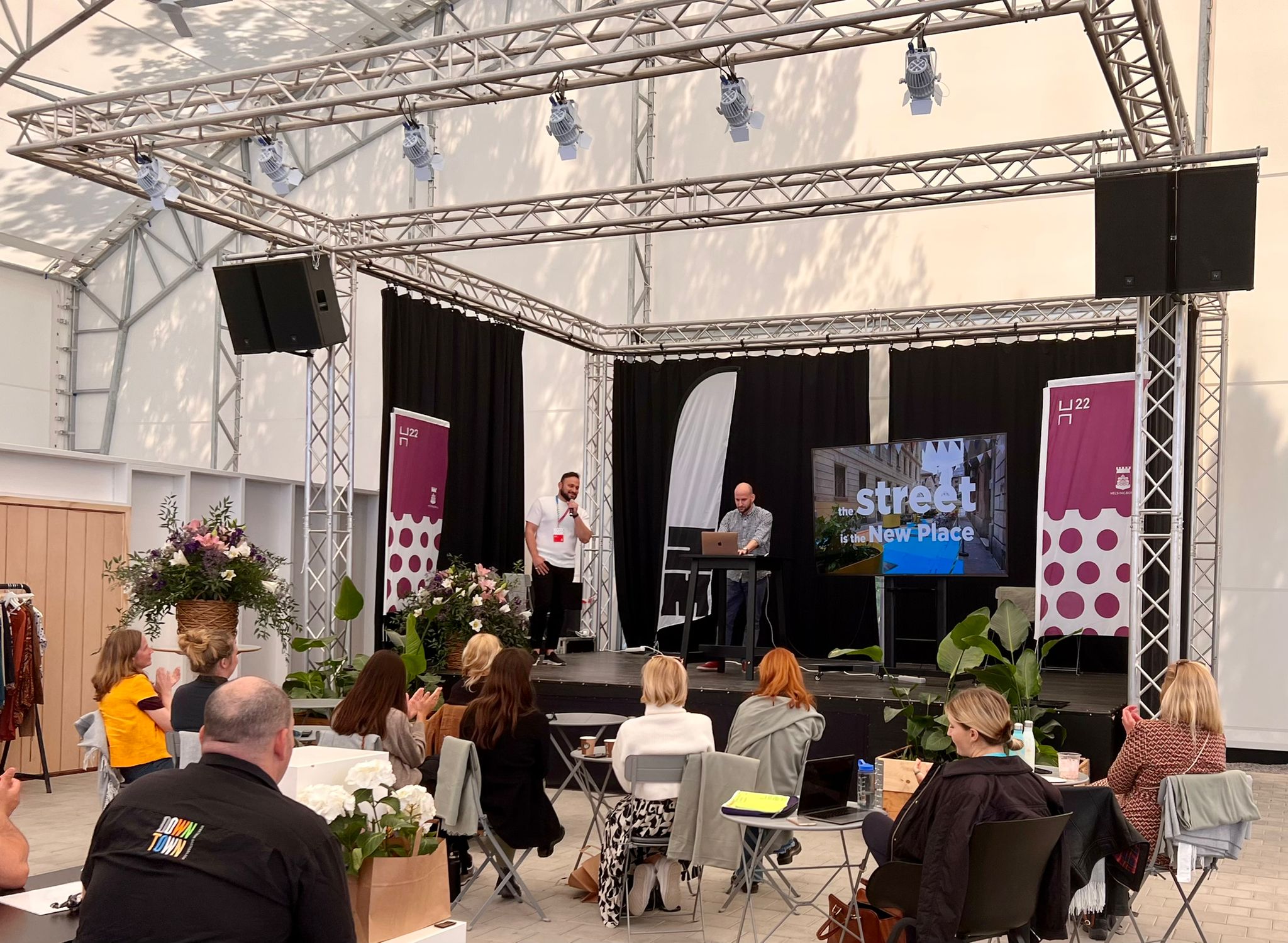
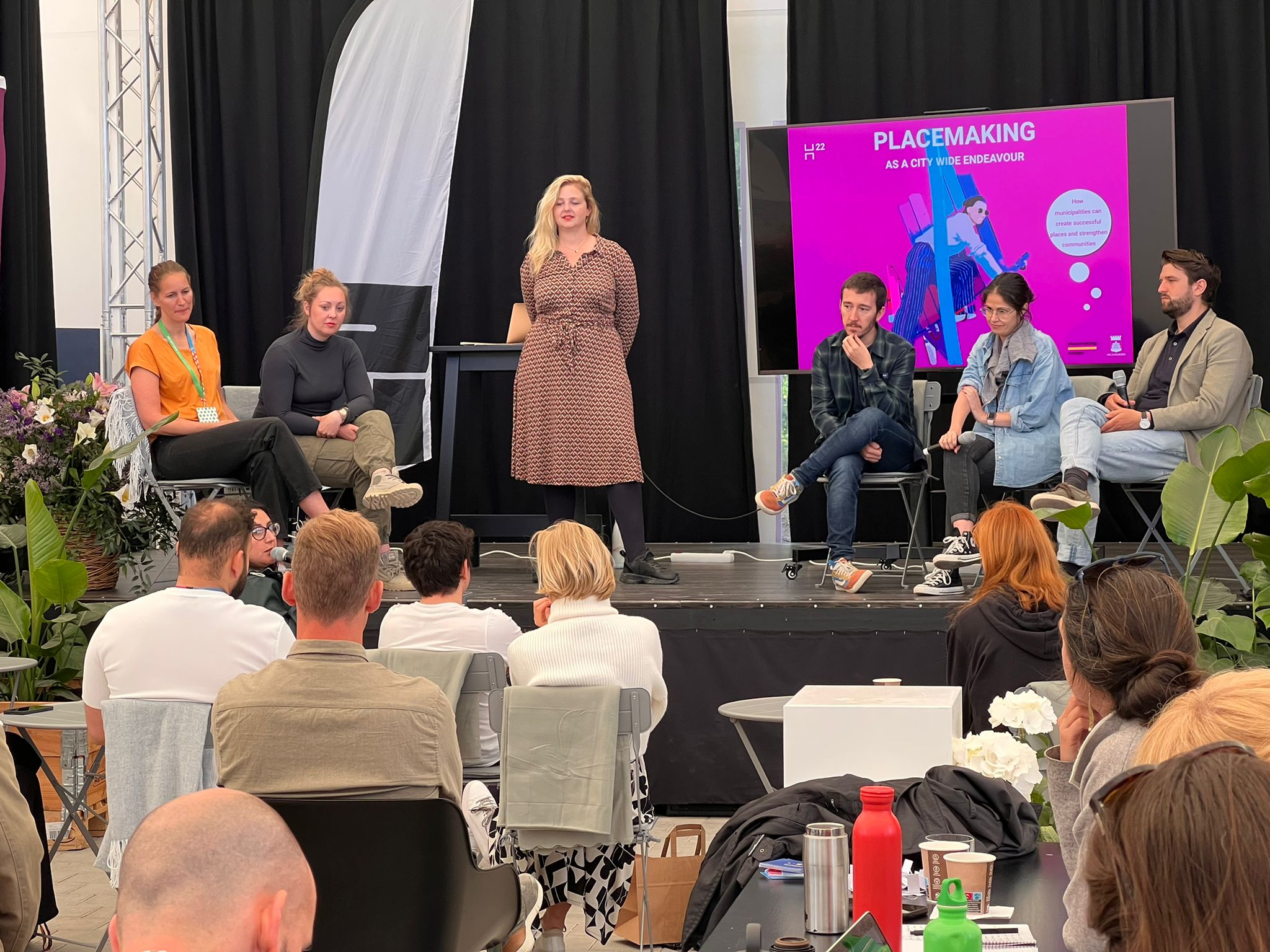
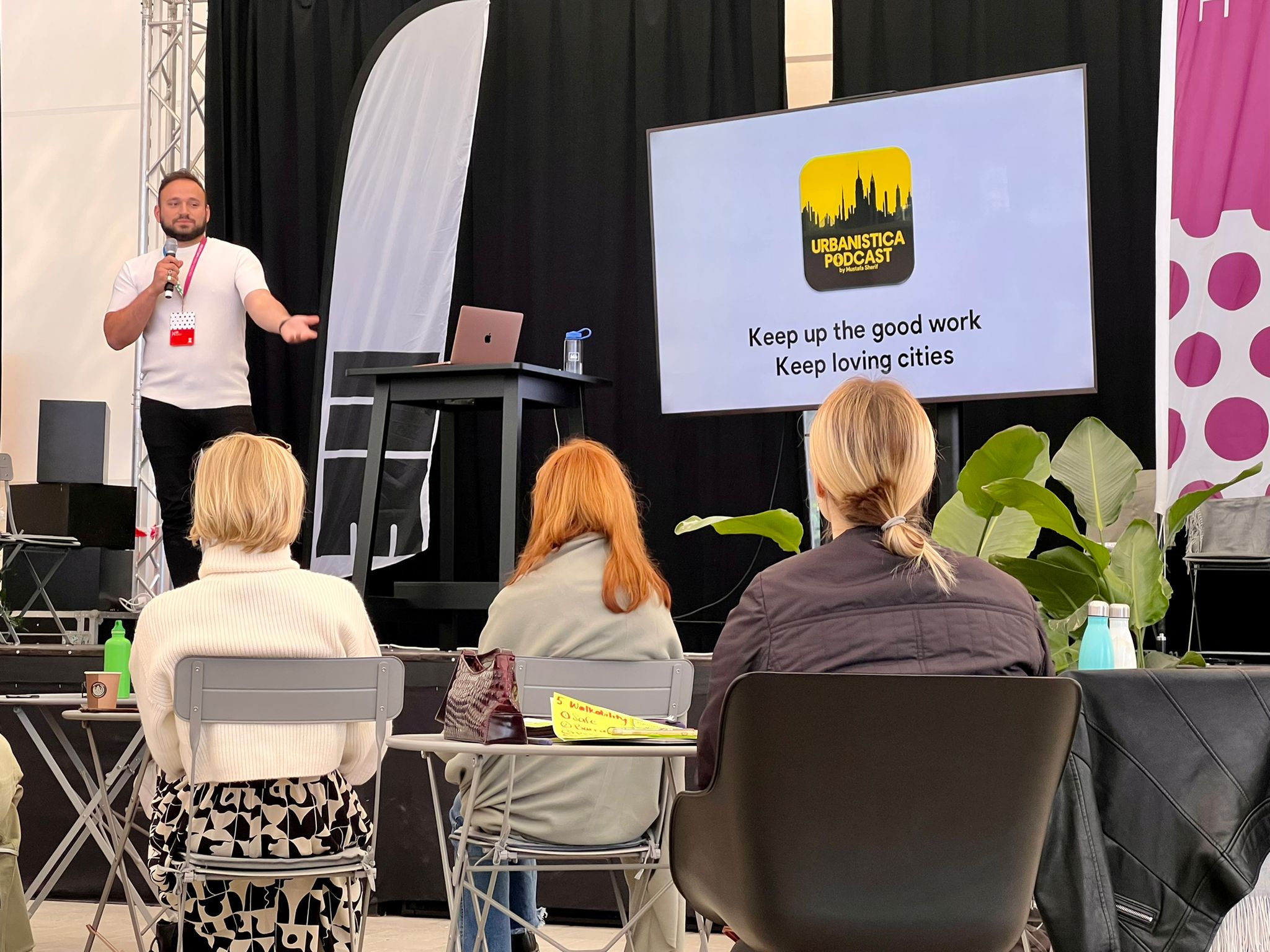
The Rapid Inspirations from the Placemaking Europe Network -session included stories from visualising the positive effects of good places by Mathilde Riou (Urban Mycelium), how streets are becoming the places to be in Budapest by Daniel Radai and how everyone has a story to tell about cities and how this aligns with the practice of creating inclusive cities by Mustafa Sherif (Urbanistica podcast) – and many more. I had the chance to introduce the Malmi placemaking project we are currently carrying out as part of the suburban regeneration project in Helsinki and the NewStreet project which examines how future streets could feel like when we move from speed limits to slowness incentives and put people and nature first. It was fun to receive photos from both projects in action the same afternoon: the opening of the Kera FutureStreet experiment was packed with people exploring the future of streets on site.
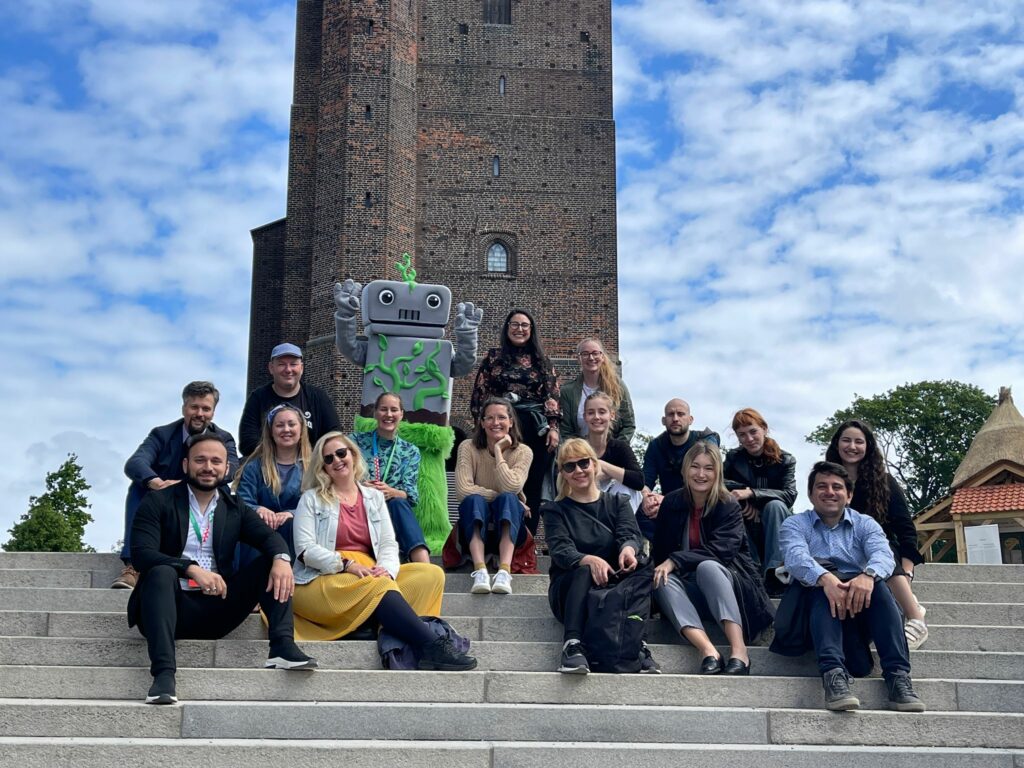
First row from left: Mustafa Sherif, Charlot Schans, Päivi Raivio, Anna Louise Bradley, Todor Kesarovski. Second row from left: Ethan Kent, Moa Sundberg, Cecilia Fredriksson, Mathilde Riou, Marta Popiolek, Daniel Radai, Alice Bazzica, Clementine Robert. Back row from left: Ryan Smolar, local superhero, Viviana Cordero, Christina Wideland.
We also had the long awaited Placemaking Europe Leaders -meeting with an inspirational introduction to the latest developments by Charlot Schans (STIPO, Placemaking Europe) and introduction to the city of Pontevedra, the venue for Placemaking Week 2022. Just a little sneak peek: Pontevedra has banned all but essential traffic from the city centre and promoted journeys by foot, bicycle or public transport, reducing CO2 emissions in the city by 68% since 1999.
During the two days, we came across countless more inspiring stories and examples of urban planning and placemaking around the city, ranging from a former churchyard to a lively open space connected to a restaurant quarter and how bottom-up temporary use is enabled by renting “pixels” and providing micro-grants for citizens’ own activities. Guided city walks, including one in Furutorplatsen park to introduce the Söderscen-placemaking project, gave us in depth information about the processes for creating more ownership in the city’s public places.
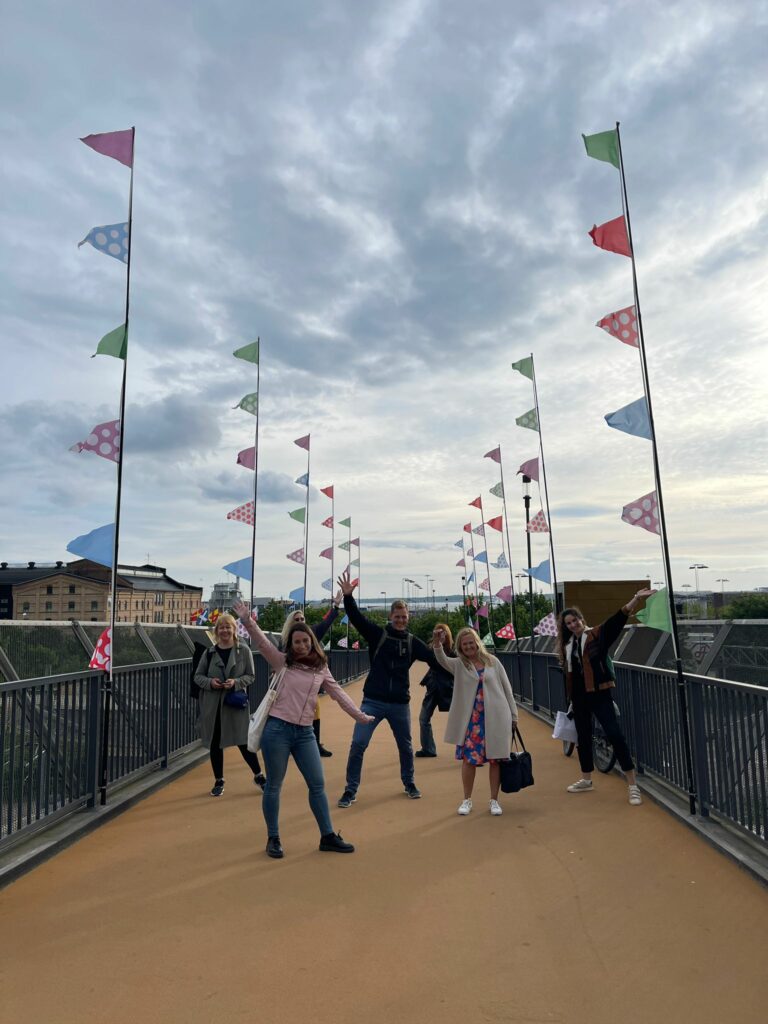
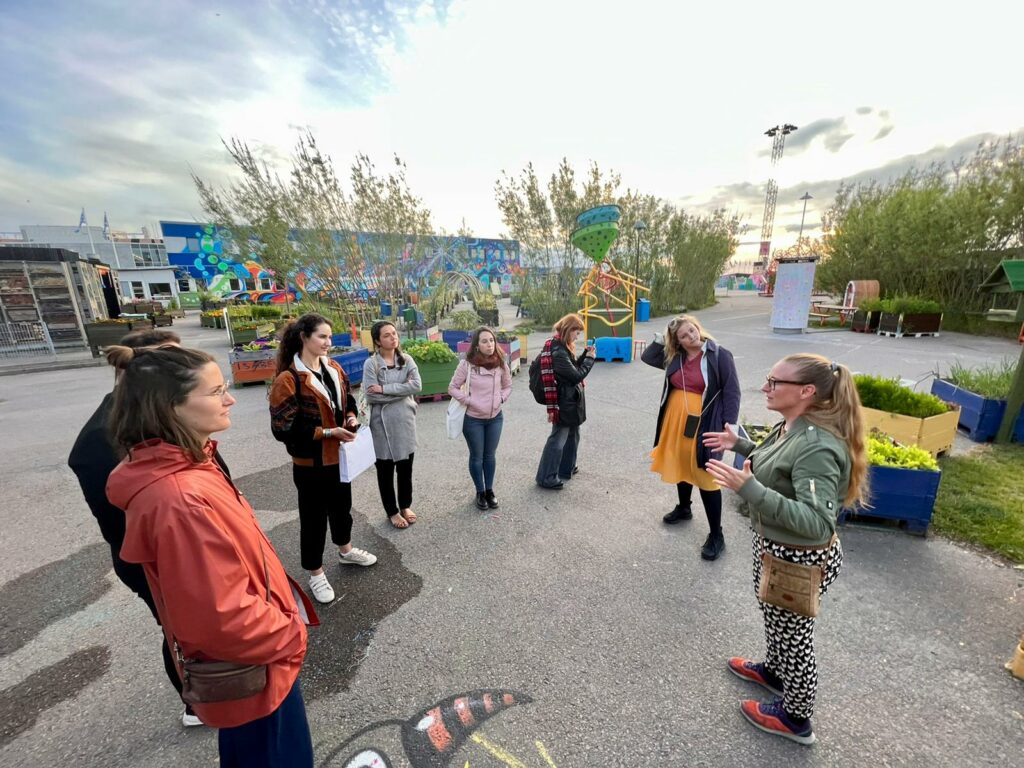
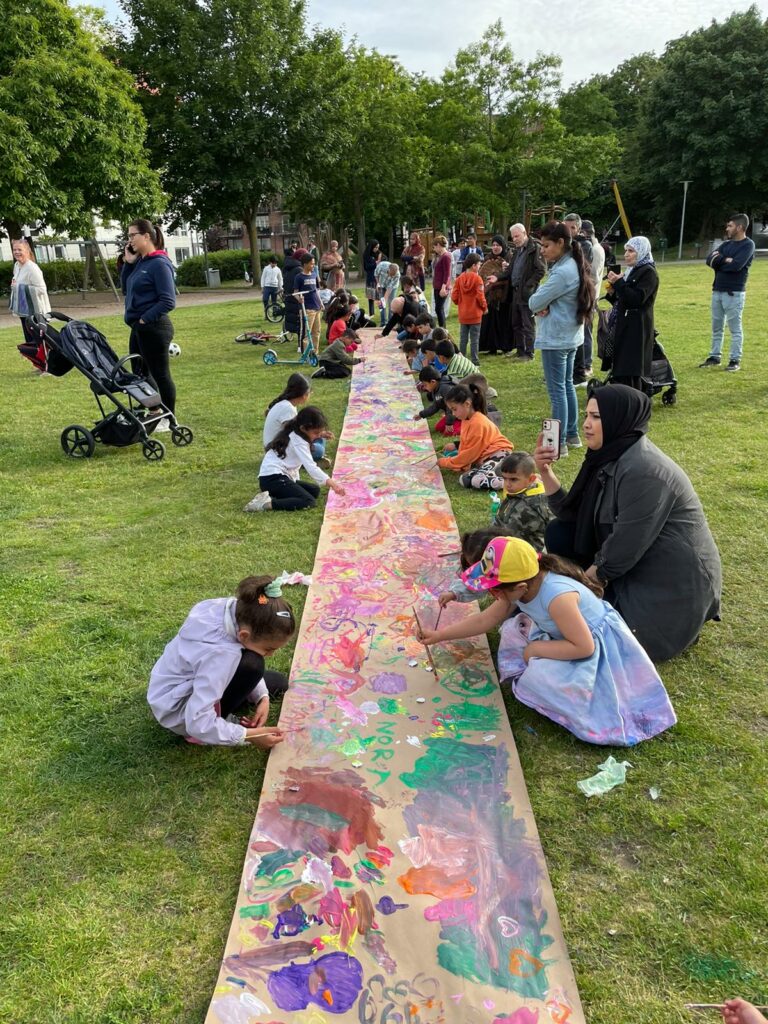
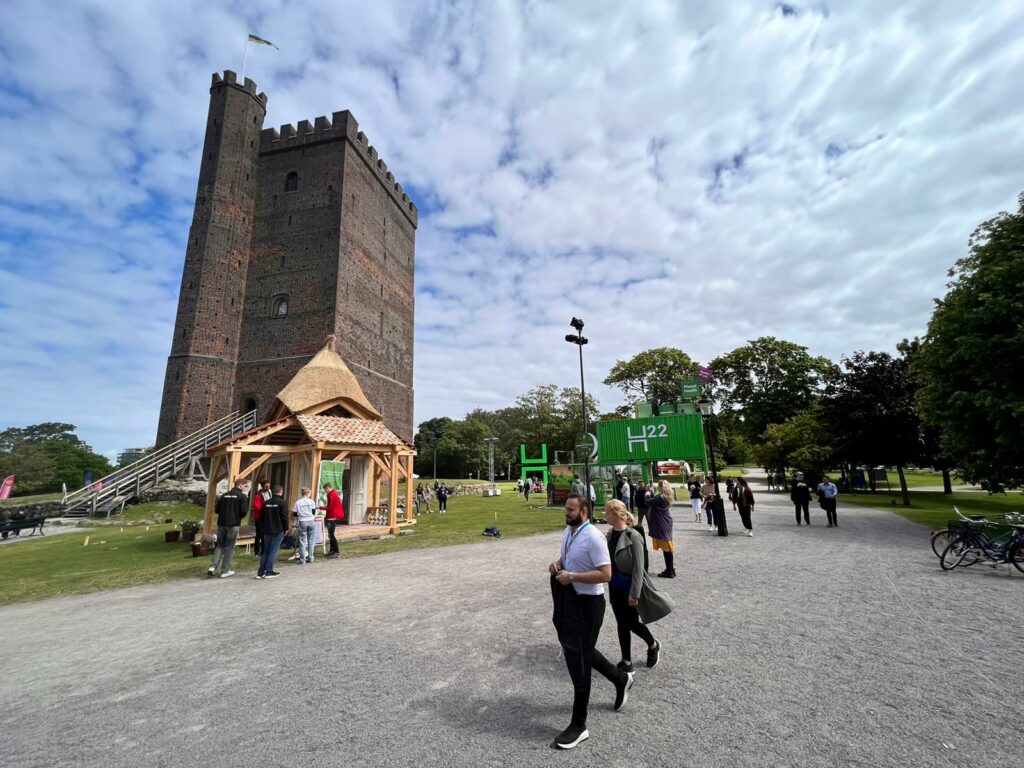
The H22 expo brilliantly sums up the experience from the two-day visit and placemaking-event, quoting the H22-website: “Each of us has a part to play in creating happy, healthy cities in balance with nature. Discover how innovation and collaboration can inspire everyday solutions to the world’s biggest challenges. Unleash your inner changemaker and connect with people from across the world. Let the energy, surprise, and different flavours of the city empower you.”
Back to the park
After the final event and a fun dinner and drinks with placemakers, I walked back to the hotel through Furutorplatsen. It was already dark. As I approached the park, I saw beautifully illuminated trees with purple lights. The darker corner with low trees, which I had thought might feel intimidating at night time, was suddenly like a magical mini-forest. I was happy to conclude that of course they had thought of that too! The lights aren’t there merely for a sense of safety, but they also spark your imagination and invite you to look, stop or sit down – that is a sign of a good place.
Päivi Raivio
Designer and placemaker, co-founder Parkly and RaivioBumann
